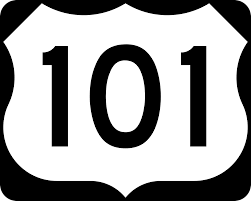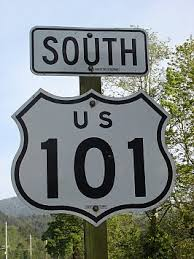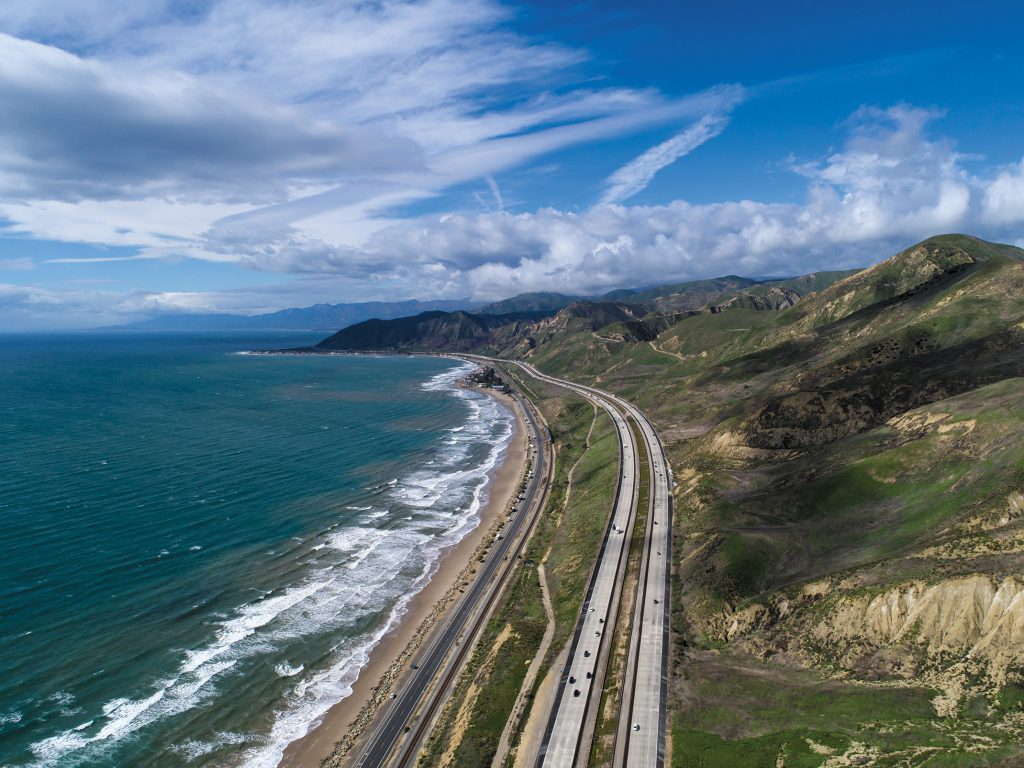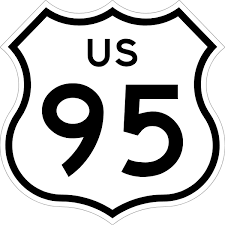Next year, our U.S. Numbered Highway System clebrates its 100th birthday!!!
Um, where's my invitation? There is a party, right?
Oh hell, I don't even get invited to Super Bowl parties just so I can overeat on windgs and chips.
Anyhoo...I last covered the first 5 multiples of 10 in terms of east-west highways, my favorite two being U.S. highways 20 and 50.
Today we will cover highways 60, 70, 80, and 90...2 of which I have seen in some form.
First up is...
U.S. Highway 60 has at its peak been a cost to coast highway...well, it DID at some point end in Los Angeles if not reaching the Pacific Ocean...that honor went to legendary U.S. 66.
Still, Los Angeles does touch the ocean, so it's a minor loophole. And U.S. 60 still holds a good amount of length across the country! Starting in Virginia Beach, Virginia, 60 travels across some coastal plain before entering the countryside and acting as quite an impressive if treacherous mountain highway. It stays near or shares road with Interstate 64 in Virginia, West Virginia, and Kentucky all through Louisville, where I 64 heads into Indiana and 60 continues traversing Kentucky's length right to its western end, seeing much of rural America and seeing the route's longest piece at 489 miles, quite impressive!
From there, U.S. 60 has less than a mile in Illinois before suffering an allergic reaction and proceeding immediately to Missouri. This location is notable as it sees the end of the Ohio River where it empties into the Mississippi.
Once in Missouri, 60 alternates between two lane and four lane highway through the state's southern section, mostly in rural regions with the exception of Springfield. In Oklahoma,U.S. 60 is highly rural and stays for the most part a 2-lane highway. It sounds like my kind of road, actually! From Oklahoma, 60 heads into the Texas panhandle to enter the Amarillo area and then go in a southwesterly direction into New Mexico. In New Mexico, 60 goes through the remainder of the Great Plains and then into mountainous regions, sharing some roadway with Interstate 25. In Arizona, the mountainous theme continues right into the greater Phoenix area. Before that, 60 passes through Globe, where U.S. 70 has its western end.
Through Phoenix and its burbs, 60 is a divided highway or flat out freeway, sharing road with I 10 and I 17., From Phoenix, 60 goes northwest as Grand Avenue all the way to Wickenburg, then turns west to cross the desert lands until its end at I 10 several miles east of the Colorado River.
Historically, U.S. 60 along with U.S. 70 continued together all the way across the desert in California, but separated once in Los Angeles's outer burbs.
Downtown-wise, 60 goes through Phoenix, Amarillo, Lexington,Kentucky, Richmond, Virginia, and many if Virginia's coastal communities.
I believe U.S. 60 is akin to U.S. 20 in that it passes through much of America's heartland without too many bypasses around towns.
U.S. 70 is also a once all-the-way-across route, though it kind of lost its identity in Arizona and California when it shared road with U.S. 60. It now goes from Atlantic,North Carolina to Glove- Arizona.
Like 60, it sees much of America's heartland in the southern regions. What can be said for U.S. 70 is that it goes a LONG length across many states, including North Carolina, Tennessee, and New Mexico, all three states having over 400 miles of this highway!
Its states include North Carolina, Tennessee, Arkansas, Oklahome, Texas, New Mexico, and Arizona. 70's major downtowns include Little Rock, Durham, and Raleigh. U.S. 70 also shares road space with many other Interstate highways, U.S. highways, and state highways.
It seems like 70, judging from maps, has lost itself over the decades with a few exceptions, meaning it is like an old relative existing in the shadows of bigger and younger people. Before the era of the freeways, I bet 70 was as grand as them all, at least as far as Arizona.
U.S. 80 was among the greats, and through some areas it manages to stay alive, particularly in Arizona, even after being truncated all the way to central Texas.
Having spent some time (2 years) in southern California, I came to learn that U.S. 80 was an important road that had its western end in downtown San Diego. Much of U.S. 80 is accessible from downtown into the mountains and parts of the Imperial Valley. In Arizona, except for a large section between Yuma and Gila Bend that was largely subsumed by Interstate 8, U.S. 80 is mostly accessible. If one looks at a pre-Interstate map of Arizona, they can see the wild route that 80 took through the state, going north then south, then WAY south to the Mexican border before climbing north again.
Currently, the path of 80 in New Mexico is where Interstate 10 lies, and is so into Texas all the way past Van Horn, where Interstate 20 takes over the route. Pretty much every town along 20 has a business 20 where 80 once was.
As of now, 80 exists officially starting in Dallas and continuing through Lousiana, Mississippi, Alabama, and finally Georgia where it ends on Tybee Island. It does have a lot of independent sections but, like 70, lies parallel to more modern Interstate highways.
Downtown-wise, 80 begins in downtown Dallas and goes right through Shreveport, Jackson,Mississippi, Montgomery,Alabama, and Macon and Savannah,Georgia.
To me, 80 is almost a close cousin to 66, representing a previous national culture that parts of which I wish we could go back to.
And finally we reach U.S. 90, which like U.S. 10, was never a coast to coast. route. In fact, its western end was fairly bland in Van Horn, Texas, where it met U.S. 80.
All that said, though, U.S. 90 is a road of the Deep South, serving many communities and cities in that part of the country. In many areas it does parallel Interstate 10 (whereas U.S. 10 became overhsadowed by Interstate 90), but is not insignificant enough to be terminated.
Cutting across the vast emptiness of West Texas, U.S. 90 goes through the rest of the state (at 763 miles), then Louisiana, Mississippi, Alabama, and a 409 mile stretch across Florida's east-west length.
Between Pensacola and New Orleans, 90 should be called the Gulf Highway as it lies quite close to the Gulf of...the name of your choice! Politically I don't give a crap, but a few hundred years doesn't get canceled on a personal whim.
Downtown-wise, 90 wins the prize!
San Antonio
Houston
New Orleans
Jacksonville,Florida
I must confess, I have never been on any part of U.S. 90 that I am aware of. I've probably flown OVER it once or twice.
Incidentally, that image of the U.S. 90 sign is real: Florida colorized their U.S. highways in the 20th Century.
And with that, my look into the 10s is complete.
Next up is whatever I decide, but it will likely focus on some odd-numbered U.S. routes. I also plan to examine the gradual decline of the U.S. numbered highways in California.
We shall see.































